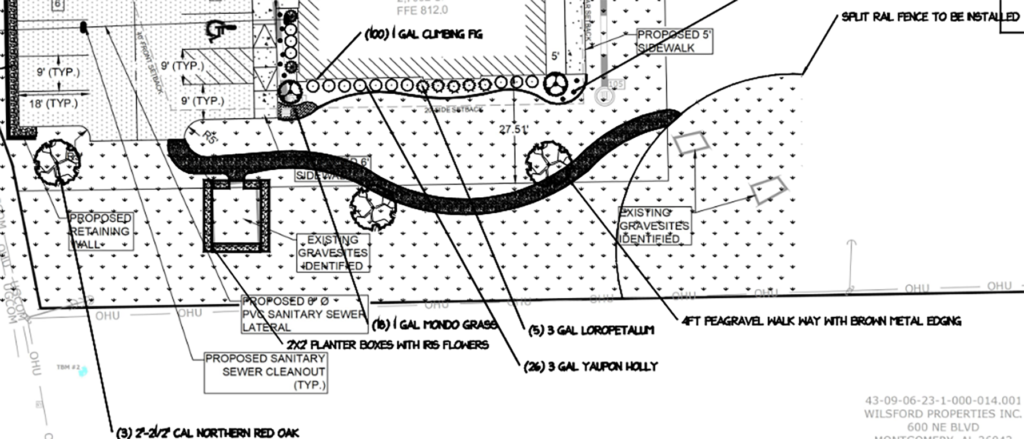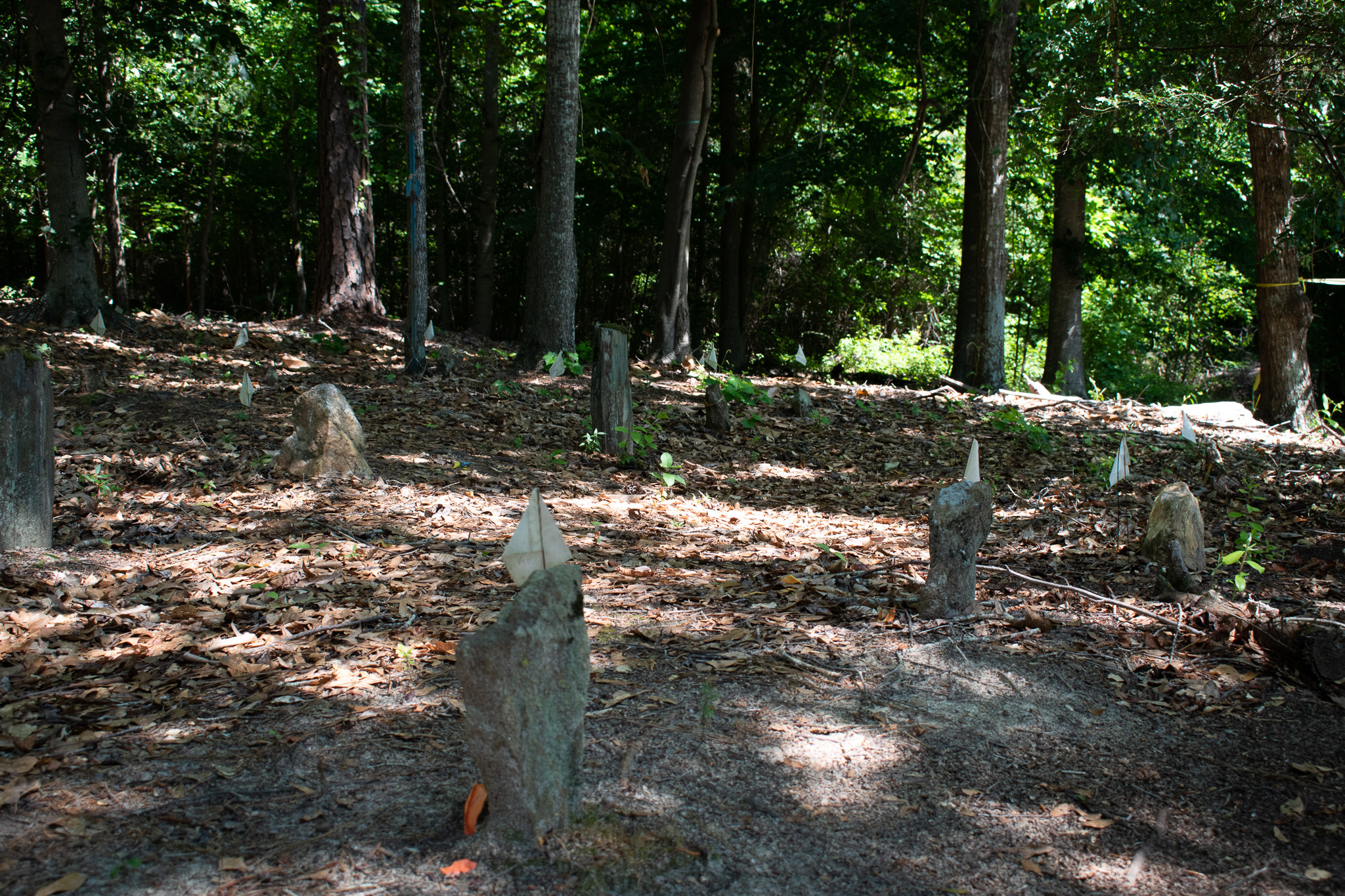Auburn High School Students Provide Input
BY KENDYL HOLLINGSWORTH
KENDYLH@OPELIKAOBSERVER.COM
OPELIKA —
Following a string of disputes and resolutions last year, the George and Addie Giddens Cemetery now has plans to be preserved and honored.
“Although the trees and fieldstones that were lost can never be replaced, the current restoration plans will hopefully bring back some level of dignity and respect to the sacred space and honor those the space represents,” said Robert Bubb, Auburn University professor and lead preservationist for the cemetery.
The Giddens Cemetery, which received historic designation in 2022 from the Alabama Historical Commission, is located on the old Giddens property in the 2500 block of Frederick Road in Opelika. The African American cemetery is home to more than 100 burials that date as far back as the early 1900s, most of which are unmarked, or marked only with fieldstones or other natural indicators.
A descendant of George and Addie Giddens sold the property to Shey and Terri Knight a little over a decade ago. More recently, plans to purchase and develop the property were put on hold in light of the research.
The research team, consisting of Auburn University professors and the Lee County Cemetery Preservation Commission (LCCPC), met in May 2022 with the landowners, developer BC Stone Homes and several community members to come to a consensus on how best to proceed with preservation of the sites.
Over the next several months, the parties worked together to draw up plans for Burial Sites 1 and 2 — with the help of AP history students from Auburn High School.
“[In December] we came to final agreements on the preservation plan for burial sites 1 and 2,” Bubb said. “We also received official approval and the necessary permit from the Alabama Historical Commission.”
Bubb and Carmilla Tindal, president of LCCPC, said the descendants get the final say anytime it comes to dealing with cemetery preservation.
“The descendants are critical,” Bubb said. “We do not decide how a cemetery is preserved — those in the descendant community need to make those decisions.”
Many of the students’ ideas will be implemented as well, Bubb added, including box planters with flowers surrounding Burial Site 1, a split-rail fence enclosing the south side of Burial Site 2 and a rock path connecting the two sites. The plans also include three oak trees that will line the path and replace the three trees lost when the sites were cleared. Fieldstones that were scattered by the clearing process will also be re-erected in place with bordered clearances measuring 1 foot by 1 foot. Three plaques will be placed on the property: a historical plaque set on a large stone at the beginning of the path, and two standalone informational plaques at each of the burial sites.

“Dr. Bubb has obviously taken the lead role in working with Bryan [Stone, of BC Stone Homes] and the state on the sites to be preserved,” said Shey Knight, one of the landowners. “I know that he secured the permit recently to clear these spaces and make the improvements, and we are ready to assist when the time comes, which I understand may be soon. We are delighted with the plan and thankful for Dr. Bubb’s work.”
BC Stone Homes will fund and provide the landscaping, improvements and continued maintenance of the sites, Bubb said, and the landscaping work is estimated to be done by March.
Bubb said he was first alerted to the burial sites in 2018 by LCCPC member Edna Ward, but it wasn’t until 2019 that he was able to begin research on the 7-acre parcel of land. A few months later, he began physical work on the sites with permission from the landowner.
Auburn University geosciences graduate student Hayden Malloch joined the research team shortly after that, and with the use of ground-penetrating radar (GPR), the team was able to locate about 150 burials across three sites. The LCCPC worked closely with the Auburn University team during the process.
With the blessing of the Giddens descendants and help from several community organizations, Sites 1 and 2 of the Giddens Cemetery have been cleaned up and maintained while plans for preservation were in the works.
“Opelika wants to be progressive and grow, and with that growth comes development and properties and these historical spaces,” Tindal said back in May. “Ultimately, there has to be a marriage and a compromise where that growth and progress can take place with the preservation, the protection, and the respect and the dignity of our historical spaces in our communities.”
“There are a half-dozen additional African American burial grounds in Lee County that are under threat of development,” Bubb added. “It is my hope that what we accomplished working with developers here at Giddens Cemetery can become a model of how we can come together to preserve these historic sites. These sites can add educational value and pride to the community.”

